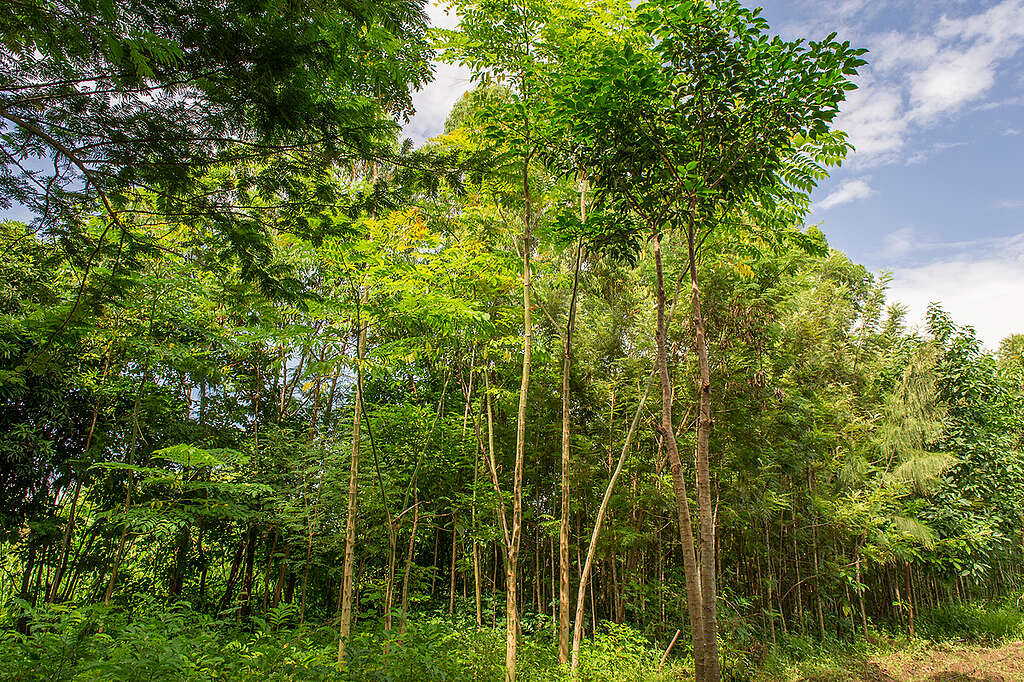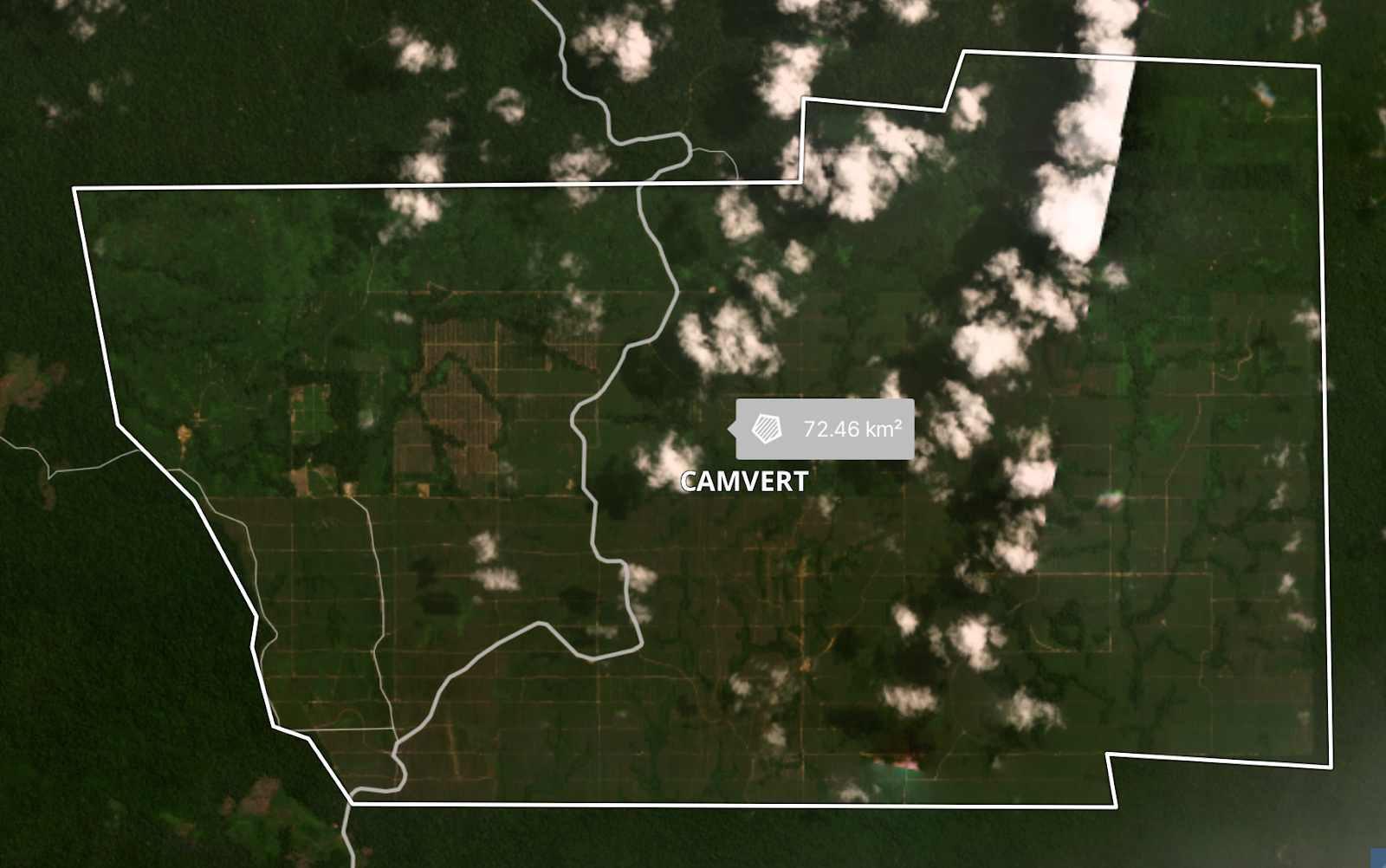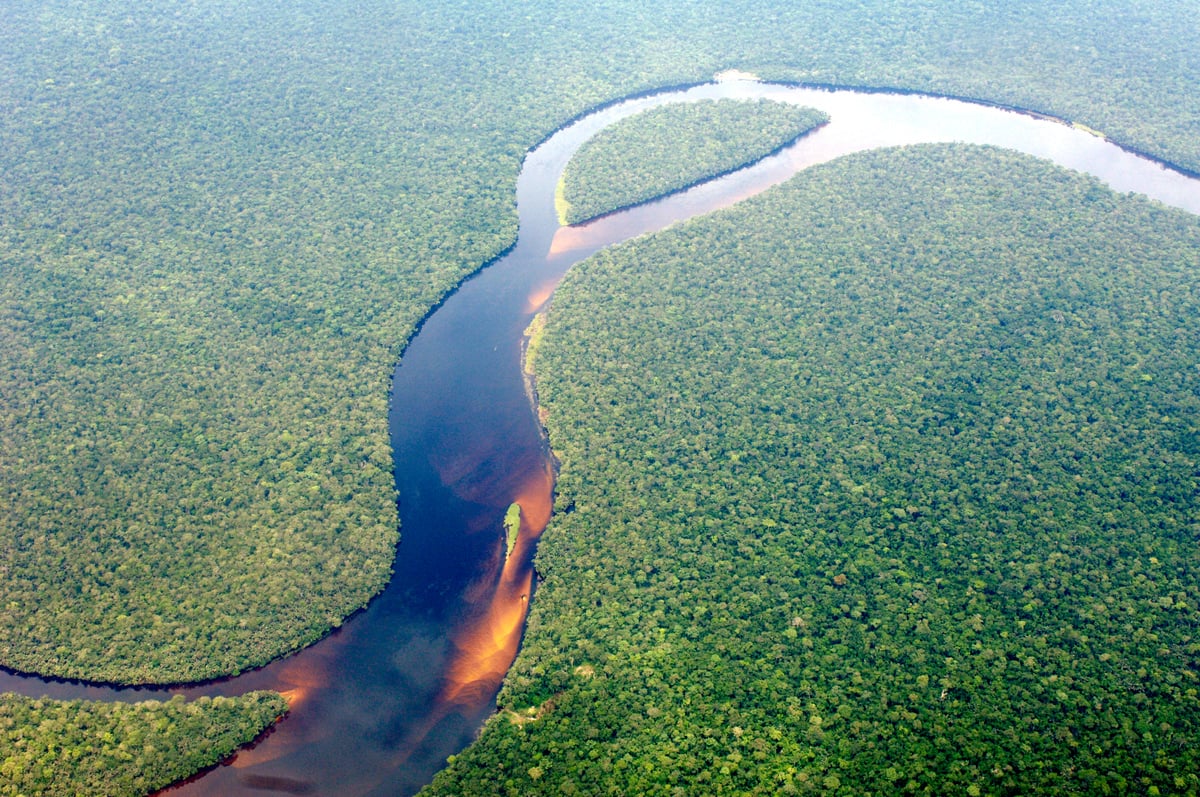
The Kenyan government recently lifted a six-year moratorium on logging in public and community forests to allegedly curb unemployment and enhance economic development despite environmental concerns. This comes less than a year after the president pledged to increase Kenya’s tree cover to over 30% by 2032 to avert adverse climate change effects.
The decision was met by public outcry, and reasonably so. Before the implementation of the moratorium on logging in 2018, the Taskforce formed to investigate the state of forest resource management in Kenya and logging activities reported that the Kenya Forest Service Board and Management were marred by abuse of office and corruption, exemplified by unethical behaviour and a lack of accountability.
The consequences of these malpractices included illegal and unchecked logging of indigenous tree species, illegal squatting and large-scale development of public infrastructure, blurring the line between forest protection and exploitation.
Since lifting the moratorium, these issues have resurfaced, following reports of the arrest of suspects involved in illegal activities by the Kenya Forest Service less than a month after the declaration.
Such occurrences, coupled with the impunity and corruption surrounding the Kenya Forest Service (KFS), have done little to reassure the public that lifting the moratorium on logging is a good idea.
In response to these concerns, the Law Society of Kenya moved to the Environment and Land Court to challenge the president’s moratorium reversal. Their argument was that lifting the ban is premature considering the lack of scientific corroboration, and the failure to conduct an environmental impact assessment or consult the public in communities where the directive may apply. The court paused the president’s directive to reverse the ban pending a hearing, along with a restriction on logging permits and licences being issued until a verdict is reached.
Getting the court to halt the lifting of the moratorium on logging is a step in the right direction, but we cannot stop there. We need to unite and urge the government to restore the ban and protect forests. Sign this petition to save Kenya’s forests from being destroyed for profit by calling for the reinstatement of the ban.
The history of logging moratoriums in Kenya
The 2018 logging ban is not the first moratorium Kenya has imposed to curb uncontrolled logging. In 1999, following rampant deforestation and intense drought, the government enacted a 90-day moratorium on logging in public forests. The ban was later extended for over a decade up until 2012.
However, the ban did not effectively meet its obligations because of noncompliance by large milling companies throughout the 13-year period. This partiality endangered indigenous tree species and reduced the country’s tree cover. Still, the moratorium managed to strengthen public participation frameworks and enhance forest regulatory frameworks and policies such as the 2005 Forest Act, thereby facilitating sustainable forest management in Kenya.
The next six years after the ban was revoked were characterised by overexploitation of indigenous forests and tree species, especially cedar, which led to a significant reduction of the tree cover and composition.
More prevalent was the destruction of the country’s major water towers, namely Mt. Kenya, Mt. Elgon, Mau Forest Complex, Cherangani Hills, and Aberdares, and the subsequent decline of water levels, which put Kenya at risk of a water crisis. To counter these impacts, the government imposed a temporary ban in 2018, which was later extended, under advice from the appointed Taskforce, until recently when restrictions were removed.
The Moratorium on logging must be reinstated
The moratorium on logging is very valuable to Kenya’s social and economic development. To put this into perspective, approximately 75% of water resources in the country are sourced from the five primary water towers.
Water plays an extremely critical role in the survival of a nation economically, environmentally, socially, and healthwise.
- For starters, industrial processes rely on this resource for energy production and the manufacture of goods. The scarcity of this resource can delay these activities and result in losses for industries and the country’s economy.
- Water is also necessary in maintaining agricultural productivity and food security and building climate resilience, and a shortage would spell doom for the Kenyan population.
- Inadequate access to clean fresh water can also increase the population’s vulnerability to waterborne diseases and may even increase the mortality rate.
- More notable are the conflicts that may arise as a result of water scarcity across the country. Overall, water availability is paramount to the functioning of society.
Lifting the moratorium on logging is a recipe for environmental disaster and a threat to society as it paves way to unchecked and illegal logging, increasing the potential of water tower destruction and the possibility of a water crisis.
How a logging moratorium works
Understanding what a moratorium on logging does is key to comprehending why removing logging restrictions is absurd. A logging moratorium is enacted to tackle specific environmental, economic, and social issues associated with forest management. Such a ban does not restrict all forms of tree cutting. Rather, it prevents unsustainable logging practices that may arise, especially due to issuing of new logging concessions.
A moratorium also evaluates forest conditions and the effects of logging on these complex ecosystems. This allows the relevant authorities to make informed decisions and formulate policies and practices that support sustainable resource utilisation.
Under certain circumstances, a moratorium may permit logging, including to aid research efforts, promote livelihoods of local communities, and to carry out restoration projects. However, permitted activities must be sustainable and follow stringent guidelines as stipulated in the moratorium.
If well executed, a moratorium on logging can promote sustainable resource extraction, safeguard biodiversity and ecosystems, and promote the wellbeing of local and indigenous populations, without affecting timber supply.
But lifting a moratorium when none of these outcomes have been achieved hinders its effectiveness, and such is the case with Kenya.
Lifting Kenya’s moratorium on logging is a disaster waiting to happen
Lifting Kenya’s moratorium on logging is ill-advised for many reasons, the most notable being that we are in the midst of a climate crisis. Forests play a crucial role in mitigating climate change impacts by storing carbon dioxide. When trees are cut down, stored carbon is released back into the atmosphere.
The global carbon emissions are already through the roof. If the moratorium is not reinstated, we will not only be adding to the emissions but also reducing the forests’ carbon storage capacity, exacerbating the climate emergency.
Other potential risks of removing logging restrictions include:
- Lifting logging restrictions is bound to increase deforestation and cause habitat destruction and loss of biodiversity.
Image URL: https://pixabay.com/photos/deforestation-forest-tree-stump-62486/
Removing logging restrictions paves way for unregulated forest harvesting, which drives deforestation. The last time a moratorium on logging was revoked, the country’s tree cover declined below the recommended minimum of 10%. While the current cover is slightly above 10%, the chances of another decline is high.
Other challenges caused by deforestation include habitat destruction and loss of biodiversity. Forests provide habitat to diverse plant and animal species. When trees are harvested, the size of the habitat reduces and species scatter, increasing their risk of extinction. The disruption also results in decimation of species that require specialised habitats, further causing a decline in biodiversity.
- Withdrawing the moratorium on logging increases the rate of soil erosion and puts Kenya at risk of water and food insecurities.
Forests play a crucial role in soil conservation. The roots anchor the soil to the ground while the branches and leaves form canopies that prevent harsh elements like heavy rainfall and strong winds from causing soil erosion.
Forests also contribute to soil fertility as decomposed branches and leaves that have fallen from trees are a source of essential nutrients.
However, felling trees can disrupt these functions and reduce the fertility of the soil, leading to poor water quality and low agricultural productivity. For one, logging multiplies the rate of soil erosion, causing nutrient loss as the top layer of soil contains the most nutrients. Logging also reduces the canopy cover, exposing soil to harsh elements that increase its susceptibility to erosion, altering the natural flow of nutrients.
Consequently, nutrient depletion prompts farmers to use excessive chemical fertilisers to increase the soil’s fertility. However, the long-term use of excessive chemicals to add nutrients to the soil does more damage than good, including lowering agricultural yield and environmental degradation.
Soil erosion caused by logging also impacts the quality and quantity of water. When soil erosion occurs, sediments wash into water bodies, including rivers, dams, and lakes. These sediments, which comprise soil particles and pesticides and fertilisers used in the fields, clog and pollute waterways diminishing the availability of fresh water for agriculture and human consumption. Therefore, withdrawing the moratorium on logging puts Kenya at risk of soil erosion-induced food and water insecurity.
- The lack of a moratorium on logging is likely to cause water tower degradation.
Forest ecosystems are natural water regulators. Kenya’s major water towers are the primary source of fresh quality water in the country. However, logging is bound to cause deforestation in the water towers, which will affect their capacity to provide sufficient clean water.
For instance, between 2000 and 2010, massive deforestation in Kenya’s water towers led to degradation to the tune of 50,000 hectares, meaning approximately 5,000 hectares of forest area were depleted each year. The existence of a partial logging ban and the extensive noncompliance by large milling companies during this period was responsible for this loss. Consequently, Kenya’s water supply was set back by roughly 62 million cubic metres annually, and for each year, the country lost over $19 million.
The same consequences can be expected if the government refuses to reinstate the moratorium on logging and proceeds with its plan to harvest up to 5,000 hectares of forest area for commercial purposes.
The reduction of water resources has the potential to delay the country’s achievement of the Big Four Agenda that includes food security, universal healthcare, affordable housing and manufacturing, jeopardising the attainment of Vision 2030.
- Revoking the logging moratorium will increase illegal forest harvesting, an unsustainable practice that leads to adverse environmental impacts.
The lack of a moratorium on logging creates confusion as to which practices are permitted, allowing illegal loggers to capitalise on loopholes. The 1999-2012 selective logging ban is an example of how regulatory ambiguity can cause forest destruction and exemplifies the importance of a moratorium on logging in countering illegal forest harvesting.
Additionally, revoking the moratorium and leaving logging operations to a sector notorious for corruption, impunity and resource mismanagement is likely to have a detrimental outcome. That is because corrupt sector officials are likely to take bribes to ignore illegal forest harvesting without fear of consequence, increasing the exploitation of forests for profit.
Cases of illegal logging are already emerging even though the ban was just lifted recently. If the moratorium is not restored, we can expect a sharp decline in tree cover, habitat destruction, biodiversity loss, water shortages, conflicts, loss of livelihoods and reduced agricultural productivity. These consequences, some of which are already happening thanks to the climate emergency, will have far-reaching implications for Kenya, which may take a while to recover from.
- The long-term economic losses associated with forest harvesting override the short-term benefits.
By revoking the moratorium on logging to promote economic development, the government is putting profits before nature and its citizens. Doing so is counterproductive as the benefits will be short-lived because in the long-run, the cost of reversing the damage caused by logging will be higher than the benefits accrued from the sale of timber and wood.
For instance, unrestricted logging is bound to cause agricultural and water resource pollution and depletion. The degradation of the forest ecosystem also regresses ecotourism development, and limits the revenue earned from it. The total revenue lost and the expenses incurred to fix resource pollution and depletion are only but a fraction of potential economic losses, yet they exceed the profits gained from commercial logging.
Hence, relying on the extractive industry to stimulate economic growth and development is reckless and unwise. A 2003 Extractive Industries Review (EIR), commissioned by the World Bank to investigate the environmental, economic, and social impact of extractive industries revealed as much. According to the review, extractive industries are responsible for dire social, environmental, and economic consequences.
Greenpeace also acknowledged these findings, stating that “natural resource extractive industries have no record of contributing to poverty reduction or genuine development, and there is little hope that they will do so in the future”. Two decades later, this assertion remains true, evident in the damage being caused by extractive industries like the timber industry.
Sustainable alternatives to help maintain forest integrity
President Ruto has reiterated that the decision to reverse the moratorium on logging is aimed at creating jobs for youths and providing business opportunities. However, this approach raises concerns about forest sustainability and possible environmental consequences. Additionally, it is irrational to lift the logging moratorium when the challenges that led to its enactment are yet to be resolved.
Accordingly, we urge the president to reinstate the moratorium on logging and find sustainable alternatives to support the livelihoods of the Kenyan youth and the economy.
One of the alternatives to consider is bamboo, the fastest growing woody plant globally.
According to the Kenya Forestry Research Institute (KEFRI) 2019 National Bamboo Policy, this resource is naturally renewable and very durable; it is said to be stronger than steel. It is also sustainable in that it requires no pesticides and herbicides and uses minimal water to grow.
This tree-like grass contributes significantly to carbon sequestration as it has the capacity to absorb an estimated 12 tonnes of CO2 per hectare annually. This, combined with its fast growth and its ability to regrow from its root system without much interference, makes bamboo a potential game changer for climate change.
Bamboo trees also maintain soil fertility by leaving the soil undisturbed as they do not need to be replanted to regrow. Kenya’s bamboo growing area is concentrated in the major water towers and accounts for about 133,273 hectares, down from 300,000 hectares. Since the 1980s, bamboo has been used as a timber substitute and a sustainable raw material in the production operations of small and medium sized enterprises. All the more reason to use native bamboo to meet Kenya’s wood and timber needs.
Other alternatives include:
- Cultivating other fast-growing tree species to supplement timber and wood needs
Following the announcement regarding the lifting of the moratorium on logging, the president launched an ambitious plan that involves planting 15 billion trees over the next ten years. But the climate crisis will not be waiting a decade for new diverse ecosystems to be nurtured. And the rising demand for timber and wood products cannot be sustained by indigenous tree species without damaging forests.
Therefore, rather than jeopardise the environment for momentary economic gain, the government ought to cultivate other rapidly growing native tree species, in addition to bamboo, to ease pressure on natural forests and supplement the needs of the timber industry.
- Shifting the focus to non-wood forest products
Thanks to their self-replenishing nature, non-wood forest products, such as herbal medicine, mushroom and honey, are a consistent revenue source, amassing billions of dollars annually. KEFRI estimates their global value to be between 115.5 to 117 billion US dollars. The production of these products does not disturb the forest ecosystem or degrade the environment, exemplifying their sustainability. However, the current forest policy limits the non-wood forest products market from thriving by failing to include communities in forest management decisions and operations.
- Advocating for community-governed forests to reduce over commercialisation and increase sustainability
Communities living within or close to forests hold valuable knowledge, carried across generations, about forest ecosystems. This knowledge is useful in helping them engage in sustainably sound practices. These communities are also more invested in keeping forests undisturbed because of their deep connection to it and to biodiversity. Consequently, their involvement keeps trespassers from exploiting forest resources and destroying habitats.
Their connection to the land also makes them more inclined to carry out restoration and reforestation projects to repair any damage to the ecosystem. Therefore, collaborating with communities in forest conservation and management can reduce over commercialisation of popular tree species and enhance ecological integrity.
- Recycling wood waste and byproducts
Considerable wood waste and byproducts end up in landfills. But that does not have to be the case, especially when the demand for timber and wood products is threatening the survival of indigenous forests. A circular economy enhances the effectiveness of wood waste disposal and relieves pressure on natural forests, improving conservation efforts.
Recycling these products is critical because it minimises natural resource exploitation. For example, rather than harvest virgin wood and timber, millers can use recycled items to meet their targets. The amount of water consumed during the recycling process is also far much less than what would be needed when processing virgin timber or wood and this helps to preserve water resources.
Furthermore, recycled wood waste and byproducts indirectly contribute to climate change mitigation by keeping forests intact, enabling them to retain their function as carbon sinks.
Nature over profit
Our fate is intertwined with nature’s fate and the only way we can survive is by conserving it. Taking care of our forests safeguards food and water resources, provides habitats to diverse species, and yields long term economic gain, all of which serve human needs.
There is no time like the present to take collective action to protect our forest ecosystems.
We urge you to join us in demanding the reinstatement of the moratorium on logging and in telling President Willliam Ruto to find other sustainable avenues for job creation and economic development.
Thank you for your continued support and generosity. It is because of you that we are able to make strides towards a future where humanity and nature can coexist harmoniously.



